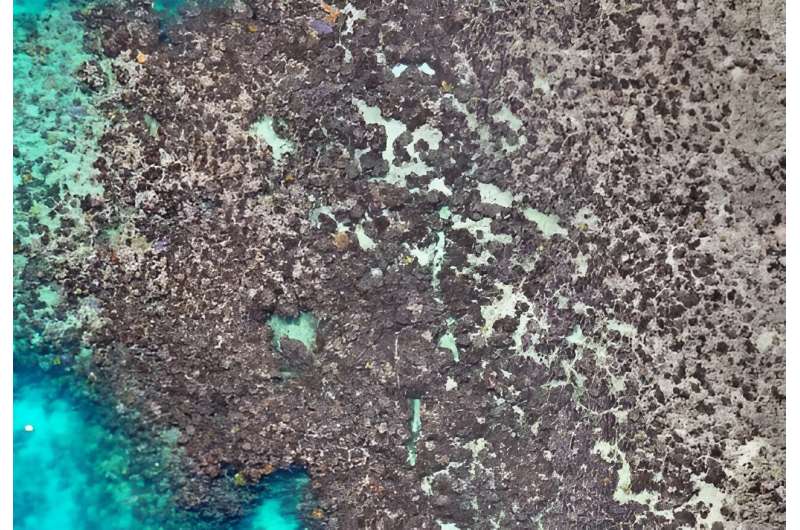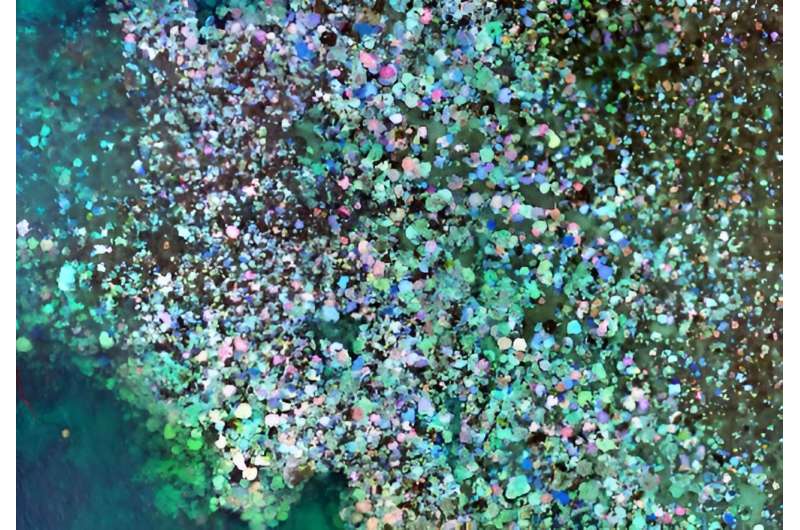This article has been reviewed according to Science X's editorial process and policies. Editors have highlighted the following attributes while ensuring the content's credibility:
fact-checked
trusted source
written by researcher(s)
proofread
New drone imagery reveals 97% of coral dead at a Lizard Island reef after last summer's mass bleaching

Last summer, the Great Barrier Reef suffered its worst mass coral bleaching event. Our new data show the devastating damage the bleaching caused to a reef at Lizard Island—a finding that does not bode well for the rest of the natural wonder.
A colleague collected drone imagery from Lizard Island's North Point Reef in March this year, and we replicated his image collection this month. The results show more than 97% of bleached corals on North Point Reef are now dead.
This is the first quantitative assessment of coral mortality from the last mass bleaching event. We don't know how much coral died beyond this reef. But we do know that, according to other aerial surveys, almost one-third of the Great Barrier Reef experienced "very high" and "extreme" levels of coral bleaching last summer.
Clearly, if Australia wants to maintain the world-heritage status of the Great Barrier Reef—indeed, if it wants to preserve the reef at all—we must act now to prevent more coral deaths.
Measuring the damage
Bleaching occurs when corals expel algae from their tissues into surrounding waters, usually due to heat stress. It leaves the coral white, starved and more susceptible to disease. Some coral die immediately. Others may recover if conditions become more benign.
The Great Barrier Reef has experienced five mass bleaching events in the last decade—the most recent in March this year. It was the most severe and widespread mass bleaching event ever recorded there. The tragedy was part of the world's fourth global coral bleaching event. That declaration was based on significant bleaching in both hemispheres of each ocean basin due to extensive ocean heat stress.
Not all bleached coral will die—it can bounce back. We wanted to find out how many corals affected by the March bleaching event were still alive three months later.

In March, George Roff at the CSIRO documented North Point Reef at Lizard Island using drone imagery. We replicated his imagery in June by also flying drones over the reef. We then snorkeled over the area to observe the situation first-hand.
The drones flew at an altitude of about 20 meters altitude and collected imagery at set times. We then joined the images into two large maps of the reef—one for March and one for June.
The first map showed corals were bleached or "fluorescing"—appearing brightly colored as they released algae. The June map showed more than 97% of the same corals had died.
Four experts independently assessed the state of each coral in set areas on North Point Reef. This allows us to present our results at North Point with high certainty.
Looking ahead
The Australian Institute of Marine Science will reportedly release its annual report on coral reef conditions later this year. This week, UNESCO expressed "utmost concern" at mass coral bleaching and called on Australia to make public the extent of coral death "as soon as possible."
Our data suggest an immediate action plan is needed to assess the extent of coral mortality on the Great Barrier Reef. It should include using remote sensing technologies, such as aerial drones and underwater remotely operated vehicles, to efficiently survey large areas. Both methods can provide standardized data and images of reefs, from shallow to deeper areas, which provide baseline data for future research.
Importantly, these data must be made accessible to those who wish to use it. Many scientists, tourists and commercial operators also collect data on the reef, and making all data freely available will help improve and update our understanding of reef health. This will ultimately lead to better decision-making.
We currently have more data than ever before about the Great Barrier Reef—and we need better systems to support open science. And if we are serious about maintaining reef health, Australians must take out international climate commitments seriously, and move quickly to reduce greenhouse gas emissions.
Provided by The Conversation
This article is republished from The Conversation under a Creative Commons license. Read the original article.![]()





















